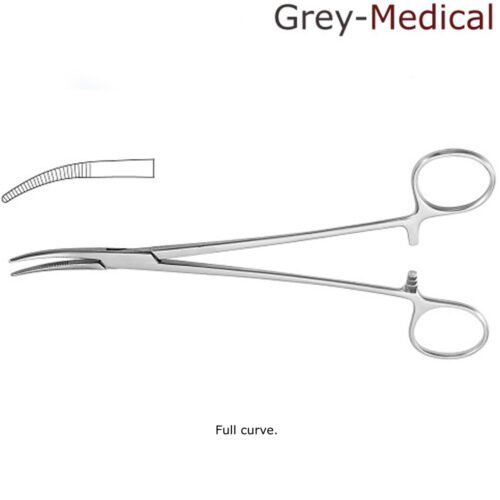Understanding Schnidt Tonsil Forceps: Features, Uses, and Comparison

Surgical procedures demand precision, versatility, and efficiency, and the choice of instruments plays a critical role in achieving these outcomes. Among the many hemostatic and clamping tools, Schnidt tonsil forceps often referred to as Schnidt clamps or tonsil clamps, hold a special place. Known for their unique design and wide applications, these forceps are a go-to tool for surgeons performing delicate and deep-seated procedures.

What Are Schnidt Tonsil Forceps?
Schnidt tonsil forceps are specialized surgical instruments primarily designed for use in tonsillectomies and procedures involving deep or confined spaces. They are characterized by their long, slender structure and partially serrated jaws, which make them suitable for reaching deeper areas without causing excessive tissue damage.
Key Features of Schnidt Tonsil Forceps:
- Long, Slender Design: The extended length allows access to deep-seated tissues, particularly in the throat and tonsillar region.
- Partially Serrated Jaws: The serration on the distal end provides a secure grip, while the smooth proximal end minimizes tissue trauma.
- Curved or Straight Variations: Available in curved and straight designs to cater to different surgical needs.
- Length: Typically longer than Crile or Kelly forceps, often ranging from 7.5 to 9 inches.
- Material: Constructed from high-quality stainless steel for durability and sterilization.
Applications of Schnidt Tonsil Forceps
Schnidt tonsil forceps are versatile and commonly used in a range of procedures. While their primary function is in tonsillectomies, they have broader applications, including:
-
Tonsillectomy and Adenoidectomy:
- Used to clamp bleeding vessels in the tonsillar area.
- Assists in dissection and removal of tonsils.
-
General Surgery:
- Suitable for clamping deeper blood vessels in confined spaces.
- Used for holding delicate tissues or passing sutures in narrow areas.
-
Gynecological and Abdominal Surgeries:
- Helpful in clamping vessels or tissues in deep pelvic or abdominal regions.
-
ENT (Ear, Nose, and Throat) Procedures:
- Ideal for clamping small to medium-sized vessels during procedures in the throat, nasal cavity, or other ENT regions.
Advantages of Schnidt Tonsil Forceps
-
Versatility:
- While designed for tonsillectomies, these forceps are also suitable for various other procedures, making them highly versatile.
-
Deep Reach:
- Their extended length allows surgeons to reach deep areas without compromising precision or causing trauma.
-
Reduced Tissue Trauma:
- The partially serrated jaws provide enough grip for clamping without crushing delicate tissues.
-
Lightweight and Ergonomic:
- The lightweight design reduces hand fatigue during prolonged procedures, improving surgical efficiency.
-
Enhanced Control:
- The curved design offers better visibility and control, especially in confined or hard-to-reach areas.
When to Use Schnidt Tonsil Forceps
Schnidt tonsil forceps are the ideal choice for procedures requiring precision in narrow or deep regions. Here are some scenarios where these forceps excel:
- Tonsillectomies, to clamp bleeding vessels and assist in tissue dissection.
- ENT surgeries involving the throat or nasal cavity.
- Procedures in deep pelvic or abdominal areas where standard forceps may not provide adequate reach or control.
- Handling delicate tissues or passing sutures in confined spaces.
Common Misconceptions About Schnidt Tonsil Forceps
-
They Are Limited to Tonsillectomies:
- Although their name suggests a focus on tonsil surgeries, Schnidt forceps have broad applications in various surgical fields.
-
They Are Difficult to Use in Other Procedures:
- Their ergonomic design and versatility make them suitable for general, gynecological, and abdominal surgeries, among others.
-
They Are Prone to Tissue Damage:
- The partially serrated design minimizes the risk of tissue trauma, ensuring safer handling during procedures.
Conclusion
Schnidt tonsil forceps are an indispensable tool in the surgical arsenal, particularly for procedures requiring deep reach and precision. Their unique design, featuring a long, slender structure and partially serrated jaws, makes them ideal for tonsillectomies, ENT procedures, and surgeries in confined spaces. When compared to Crile and Kelly forceps, Schnidt forceps offer distinct advantages for specialized applications, ensuring optimal outcomes for both surgeons and patients.
Understanding the differences between these instruments allows surgeons to make informed choices, enhancing surgical efficiency and patient safety. Whether you are performing a tonsillectomy or navigating deep abdominal spaces, Schnidt tonsil forceps are a reliable and versatile option that deserves a place in every surgical toolkit.
- Industry
- Art
- Causes
- Crafts
- Dance
- Drinks
- Film
- Fitness
- Food
- Jeux
- Gardening
- Health
- Domicile
- Literature
- Music
- Networking
- Autre
- Party
- Religion
- Shopping
- Sports
- Theater
- Wellness
- News


